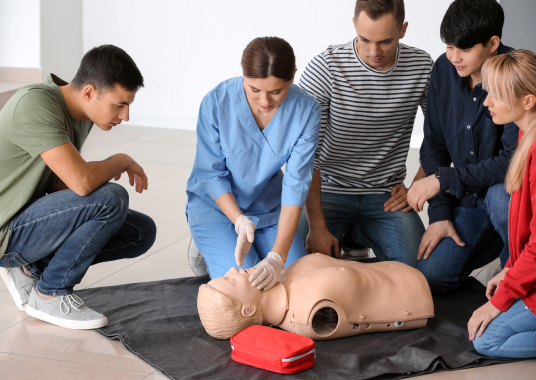Today, acquiring life-saving skills like CPR (cardiopulmonary resuscitation) has become easy and more accessible. Online CPR certification courses provide a convenient way to gain these crucial skills. This blog outlines the key steps to enrolling in an online CPR course, helping you manage the process effectively and gain the skills to respond confidently in emergencies.
How to enroll in an online CPR course
Below is the step-by-step guide to obtaining CPR certification online:
Research available courses:
Begin by researching the various online CPR certification courses available. Numerous organizations offer these courses. Compare their offerings, course content, duration, and costs to find one that best fits your needs.
Check reputation and course credibility:
Once you have a list of potential courses, verify their reputation and credibility. Employers, educational institutions, and licensing boards recognize reputed courses. Look for reviews and testimonials from past participants to know the quality of the course.
Understand the course structure:
Each online CPR course has a unique structure, so take time to understand how it is organized. Courses often include video tutorials, interactive simulations, and written materials. Some may require live virtual sessions or practical skills assessments. Make sure the course structure aligns with your learning preferences and schedule.
Review technical requirements:
Before enrolling, review the technical requirements for the online course. Ensure that your computer or device meets the necessary specifications, such as having a stable internet connection, a compatible browser, and the ability to run any required software or plugins. Most courses provide a list of technical prerequisites, so check these details carefully to avoid any disruptions during the course.
Enroll in the course:
Once you’ve selected the course that suits your needs, proceed with the enrollment process. Visit the course provider’s website and follow their registration procedure. You may need to create an account, fill out personal information, and select the course you wish to enroll in.
Pay for the course:
Most online CPR certification courses require payment before you can start. Review the payment options available and choose the one that is most convenient for you. Some courses offer flexible payment plans so explore these options if needed. Check if the organization offers a refund policy in case you encounter any issues.
Access course materials:
After completing your enrollment and payment, you will receive access to course materials. Log in to the course platform and familiarize yourself with the layout and navigation. Explore the modules, resources, and tools available. Take note of any important deadlines or requirements for completing the course. Make a study plan to help you progress towards your goals and complete the course within the allotted time.
Participate in course activities:
Engage actively with the course materials and participate in all required activities. Watch instructional videos, complete interactive exercises, and read any supplementary materials provided. Some courses include quizzes or practice tests to help you assess your understanding. Use these tools to reinforce your learning and ensure you’re prepared for the certification exam.
Take the certification exam:
To complete the course, you will need to pass a certification exam. This exam consists of multiple-choice questions and may include a practical skills assessment. Review the study materials before taking the exam. You should manage time during the test and read each question carefully.
Obtain your certification:
After successfully passing the exam, you will receive your CPR certification. Depending on the course provider, this will be delivered digitally or via mail. Save and print a copy of your certification for your records. If required, submit a copy to your employer or any relevant institutions. Ensure you understand your certification's expiration date and plan for renewal if necessary.
Stay updated with recertification:
CPR credentials often needs to be renewed every few years. Stay informed about recertification requirements and deadlines. Enroll in refresher courses or updated training sessions to keep your skills current. Many online platforms offer advanced or refresher courses to help you maintain your certification and stay current with the latest guidelines and techniques.
Conclusion
Enrolling in an online CPR certification course is a simple and effective way to learn life-saving skills. Start by researching courses and verifying their credentials. Understand the course structure and complete all requirements. Stay focused, complete the practical components, and remember to update your certification regularly.





Comments